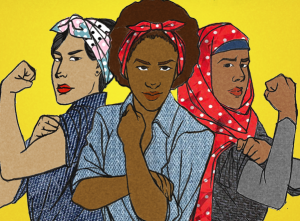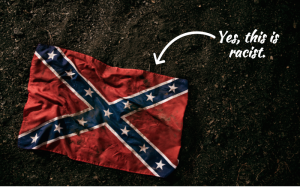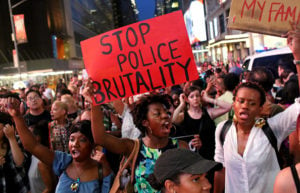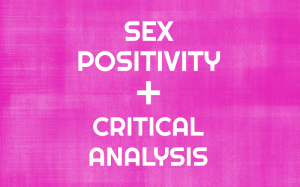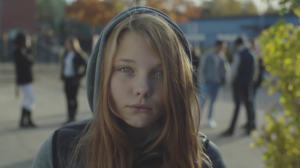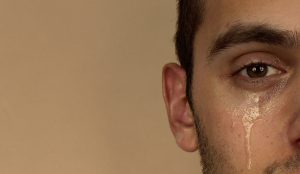
Source: Huffington Post
You know how the Grinch’s heart grows three sizes in about as many seconds? The same thing happened to me once, only in reverse.
I had an interview one day with an intimate partner violence (IPV) worker for a piece I was hoping to cover on how gender was handled in local programs.
I knew ahead of time that this person had worked in her particular program for two years – and had even done some things to help build it up to what it was now.
She also considered it genderless, a sort of one-stop supermarket for IPV survivors. With gender out of the way, she believed, all survivors would get the help they needed.
Okay. Cool. I’m on board with that endeavor.
But as she talked and my voice recorder rolled, I became increasingly concerned about what she was saying.
Her program’s “genderless” tactics, it seemed, were suspiciously close to simply catering to straight, cis women. And everybody else could just get in line behind them and hope for the best.
So that’s when I decided to drop a style of question I’m frequently known for dropping: “So…where exactly do you feel your program best helps LGBTQIA+ survivors?”
She gave me a look as if she’d just been asked the proper antidote for a werewolf. Then replied with, “…Ell…bee…vee…cue?”
Enter my heart dissolving in a puff of ash.
Not only did a person who worked with and help design an IPV program for two years clearly not have any LGBTQIA+ branches, but she didn’t even know what acronym I was talking about.
But not to worry! The IPV program she worked with was genderless. Which means that it’s totally fine. Right?
…Right?
Yeah, no.
To cut to the chase, “genderless” IPV programs ultimately not only fail to properly assist LGBTQIA+ and male survivors, but also perpetuate the belief that IPV is only a straight, cis woman’s issue.
To properly combat IPV, we need to recognize it in all its forms, not try to lump it all together in some sort of weird-ass melting pot. IPV is too complicated, too multi-faceted, and too tricky to just glaze over like a chicken.
No, we don’t need “genderless” IPV programs.
We need to go in the other direction.
To make any headway in both assisting current survivors and preventing IPV from happening in the future, we need more gender analysis in our IPV programs.
Sounds almost counterproductive, right? But I swear there’s logic to be had.
Whether we like it or not, gender is still a widespread part of our culture, which means it plays its part in IPV. And while gender may not be the ultimate culprit in IPV (as we’ll soon see), it nonetheless doesn’t mean it just disappears when it comes to how a person recovers.
To make “genderless” IPV programs is like giving a Band-Aid to someone drowning. It’s a form of assistance in its own right, but completely useless in plenty of scenarios.
This is why we need more than just Band-Aids.
1. Gender Analysis Recognizes that LGBTQIA+ People Can Be Survivors (And Perpetrators) of IPV
So let’s start with something that should sway you right off the bat: Some studies have concluded that about 25% of LGB people have suffered at the hands of violent/abusive partners or ex-partners – which is the same rate as that of heterosexual women.
(Please note that I’m purposely neglecting to mention any concrete data on IPV against transgender, queer, and gender non-conforming people since, sadly, there hasn’t been enough research conducted in this big, wide world to support any proper statistics.)
I know, right?
So if anybody tries to tell you that the reason why IPV programs primarily focus on straight women as the survivors of straight men abusers is because there are simply more cases, show them that statistic and wait for a coherent reply. (Caution: You may be waiting a little while.)
Okay, okay. Don’t like that statistic? Here’s another one: The CDC’s 2013 National Intimate Partner and Sexual Violence Survey included stats that specifically looked at IPV based on sexual orientation. Broken down from highest probability to the lowest, the list goes:
- Bisexual women at 61.1%
- Lesbians at 43.8%
- Bisexual men at 37.3%
- Heterosexual women at 35%
- Heterosexual men at 29%
- Gay men at 26%
Yeah, I was as surprised as you are when I first set eyes on this.
Not only does it seriously recalibrate what we think we know about IPV at large, it also shows how freaking important it is to start paying more attention to bisexual health and its funding.
Out of the $129 million set to fund LGBTQIA+ organizations in 2013, only $475,000 of it (that’s less than 1%) went to anything related to bisexuals.
We seriously need to get our priorities in order, folks.
2. It Recognizes That Cis Men Can Be Victims of Patriarchal Notions of Gender
Oh, stop rolling your eyes at me.
Because here’s the thing: Cis men really can be IPV survivors.
The above statistic shows that 29% of (cis, straight) men will experience IPV in their lifetimes, compared to 35% of (cis, straight) women. In other studies, it’s 1 out of 7 men as compared to 1 out of 4 women.
Is the straight cis men number less than that of straight cis women? Sure. But that doesn’t mean it’s suddenly not important enough to address.
Proper IPV recovery isn’t built on some sort of a hierarchy. Survivors are survivors, and the best way to help a survivor out is to give them the support they need.
Further, studies have shown that men who were witness to IPV as children are 3-4 times more likely to abuse their future partner(s).
But don’t get confused. This stat doesn’t mean that cis men (or anybody else) suddenly have the potential to start abusing their future partner(s) simply because they were witness to IPV as children. Rather, they have the potential to abuse their future partner(s) because they saw abuse and nobody took the time to tell them it was wrong.
I know from experience that if you grow up in an abusive household, you think it’s normal. And it takes direct, deliberate education on the matter to (hopefully) prove to you that it isn’t.
By ignoring the (cis) male side of IPV, we’re denying up to 15% of survivors the help they need while simultaneously encouraging perpetuation of the IPV epidemic.
How again is that helping the cause?
3. It Shows That Patriarchy is the Problem
Yeah, yeah, I know what you’re still saying: “But take a better look at that list in #1, you deluded fool! Lesbians aside, I bet all of those other cases were done at the hands of (cis) men!”
…Maybe? We don’t really know. But regardless of the answer, you’re unfortunately kind of missing the point here.
In plain English, gender doesn’t matter when it comes to IPV prevention.
Now don’t get me wrong. Just because gender doesn’t matter in the grand scheme of prevention doesn’t mean we should merrily skip back to “genderless” programs. It actually means quite the opposite.
We need to focus on the gender analytics of IPV to show that gender isn’t a component in IPV.
…Huh?
Focusing on gender analytics of IPV shows that IPV isn’t explicitly (cis) men trying to have power over (cis) women, but one person trying to wield power and control over another.
In other words, IPV is the product of a toxic, patriarchal society. Gender isn’t the issue. Behavior based on elitism, superiority, and privilege is.
In our patriarchal society, it just so happens that straight, cis men get all that unfair good stuff, which is why we often get confused and say “Men are the problem!” as opposed to “Patriarchy is the problem!”
And if you’re insistent on believing otherwise, you’re kind of part of the problem, too.
4. It Provides Appropriate Resources for All – Not Just Some
While gender may not matter in terms of one person being abusive to another, gender does matter when it comes to providing appropriate, helpful resources and assistance.
“Genderless” (read: still straight, cis woman oriented) IPV programs fail to recognize that LGBTQIA+ IPV has its own unique abuse tactics.
While they ultimately all ring true in their purpose of control and manipulation by abusers, these tactics nonetheless need to be recognized for their alternative routes so that IPV programs can properly promote healing.
Common LGBTQIA+ abuse tactics include:
- Divulging (or threatening to divulge) a partner’s sexual orientation or gender identity to those who don’t know, such as family, friends, co-workers, or bosses
- Claiming that the survivor partner deserves the abuse because of their sexual orientation and/or gender identity
- Claiming that the survivor deserves the abuse because they’re not enough like the sexual orientation and/or gender identity they affiliate with
- Convincing the survivor that the authorities will never believe them because of their sexual orientation and/or gender identity
- Isolating the survivor by getting the rest of the community on the side of the abuser: Since LGBTQIA+ communities are often small (especially when compared to the straight community), the survivor can quickly find themselves out of options for safe people to turn to
- The survivor simply being scared of or worried about speaking up or leaving the abuser because LGBTQIA+ communities are small enough where it’s likely they’ll run into the abuser (and the abuser’s allies) easily and/or frequently
When trying to apply assistance meant for straight, cis women to an LGBTQIA+ survivor, none of these very big, very serious, and very real specificities are addressed.
By implementing more gender analysis in IPV programs, we’re ensuring that all survivors get the distinctive assistance they need, not just some.
***
Aside from its basic principle of one person trying to control another, IPV is far from cut-and-dry.
It comes in many faces, with many backgrounds, and through many tactics. It affects not only the survivor, but the survivor’s family, friends, and community.
This is no small problem.
IPV isn’t “just” about being hit, ridiculed, controlled, and/or threatened. It’s about an entire society of people being taught in an endless cycle that some individuals are allowed to treat others deplorably.
Which makes it even more problematic (and ironic) to aim for “genderless” IPV programs.
For an IPV program to poo-poo away any facet of IPV that doesn’t involve straight, cis women means that program isn’t serious about the cause. Or, at the very least, not properly educated on it.
And until we recognize and address IPV in all of its form, we won’t be able to bring it to an end.
[do_widget id=”text-101″]
James St. James is a Contributing Writer for Everyday Feminism. He works as a transcriber for super-duper secret projects, tends to keep to himself, and is currently pitching a novel that scares agents. He uses his experiences as a way to reach out to others, usually by way of not keeping his mouth shut. When he’s not busy making cis gender people uncomfortable with his trans gender agenda, he likes to play vintage video games and eat candy. You can praise him on Twitter@JamesStJamesVI. Read his articles here.
Search our 3000+ articles!
Read our articles about:
Our online racial justice training
Used by hundreds of universities, non-profits, and businesses.
Click to learn more
Most Read Articles
- « Previous
- 1
- …
- 30
- 31
- 32





